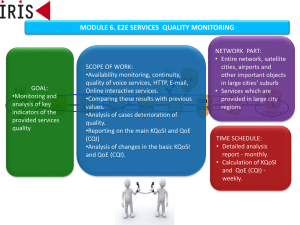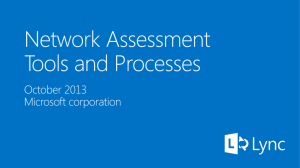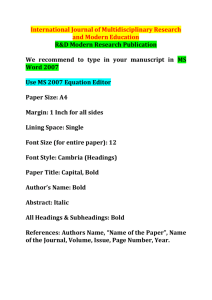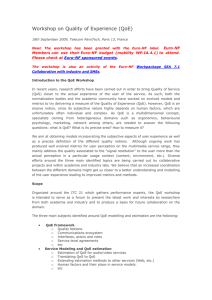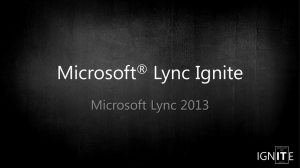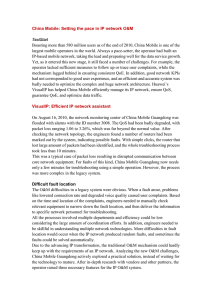Abstract
advertisement
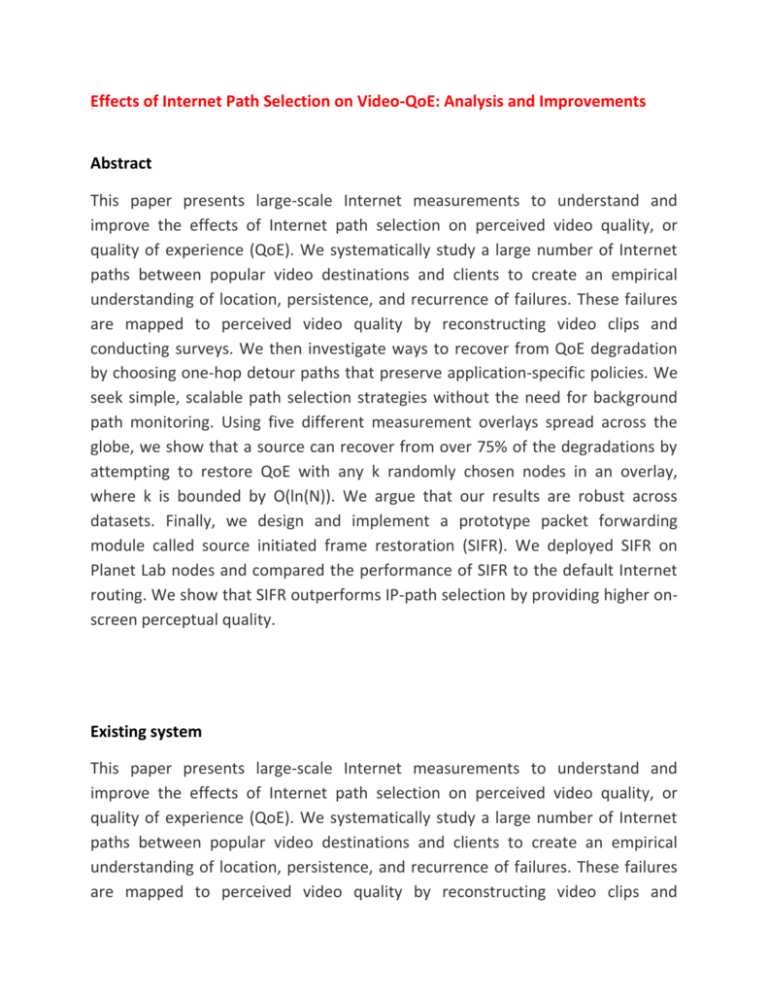
Effects of Internet Path Selection on Video-QoE: Analysis and Improvements Abstract This paper presents large-scale Internet measurements to understand and improve the effects of Internet path selection on perceived video quality, or quality of experience (QoE). We systematically study a large number of Internet paths between popular video destinations and clients to create an empirical understanding of location, persistence, and recurrence of failures. These failures are mapped to perceived video quality by reconstructing video clips and conducting surveys. We then investigate ways to recover from QoE degradation by choosing one-hop detour paths that preserve application-specific policies. We seek simple, scalable path selection strategies without the need for background path monitoring. Using five different measurement overlays spread across the globe, we show that a source can recover from over 75% of the degradations by attempting to restore QoE with any k randomly chosen nodes in an overlay, where k is bounded by O(ln(N)). We argue that our results are robust across datasets. Finally, we design and implement a prototype packet forwarding module called source initiated frame restoration (SIFR). We deployed SIFR on Planet Lab nodes and compared the performance of SIFR to the default Internet routing. We show that SIFR outperforms IP-path selection by providing higher onscreen perceptual quality. Existing system This paper presents large-scale Internet measurements to understand and improve the effects of Internet path selection on perceived video quality, or quality of experience (QoE). We systematically study a large number of Internet paths between popular video destinations and clients to create an empirical understanding of location, persistence, and recurrence of failures. These failures are mapped to perceived video quality by reconstructing video clips and conducting surveys. We then investigate ways to recover from QoE degradation by choosing one-hop detour paths that preserve application-specific policies. We seek simple, scalable path selection strategies without the need for background path monitoring. Using five different measurement overlays spread across the globe, we show that a source can recover from over 75% of the degradations by attempting to restore QoE with any k randomly chosen nodes in an overlay, where k is bounded by O(ln(N)). We argue that our results are robust across datasets. Proposed system Finally, we design and implement a prototype packet forwarding module called source initiated frame restoration (SIFR). We deployed SIFR on Planet Lab nodes and compared the performance of SIFR to the default Internet routing. We show that SIFR outperforms IP-path selection by providing higher on-screen perceptual quality. Modules: 1. 2. 3. 4. Identify perceptual degradations Random chosen nodes Reconstructing Video Clips Recover from QoE degradation Modules Description: 1. Identify perceptual degradations we probed a large number of popular Internet video destinations from 62 geographically diverse vantage points for seven consecutive days. We discovered a significant number of path outages that led to complete loss in path connectivity. We find that outages occur in various points in a path and vary significantly between paths to servers and P2P hosts. We quantify outage frequency, recurrence, location, and persistence. To measure the perceptual degradation resulting from these outages, we reconstructed a variety of MPEG video samples using the IP-traces collected from every destination set. Network anomalies typically manifest as a video artifact, which is a visible distortion during playout that persists for certain duration. These artifacts could range from slicing to freezing to extreme pixelation these artifacts and their on-screen duration depend on the type of frame impacted and encoding bit rate. Using subjective surveys, we outline application specific policies that can improve perceptual quality 2. Random Internet path selection: The Internet is organized as an interconnection of thousands of ASs. Each AS is under the purview of an Internet service provider (ISP), and neighboring ASs use the Border Gateway Protocol (BGP) to exchange reachability information. Ass apply individual policies in advertising and propagating reachability information to neighboring ASs. In reality, reachability information advertised by an AS is often the result of various provider–customer relationships between the governing ISP and other ISPs. Typically, ISPs are arranged in various tiers, where tier-1 ISPs sell connectivity to other ISPs, while tier-3 ISPs buy connectivity from ISPs in higher tiers while charging consumers. Though the model we present here is overly simplistic, it offers a basic overview of how Internet routing works. The end result of this process is that a typical Internet route often (not always) traverses lower-tier ISPs to reach a higher tier ISP (“up” the valley), followed by a journey down to another lower-tier ISP (“down” the valley) to reach a destination. 3. Reconstructing Video Files • When a sufficient number of encoded blocks are read from different parents the original segment can be decoded. • Each parent peer caches N encoded blocks separately from N segments of the video. • Each parent peer caches an encoded block of segment 1, an encoded block of segment 2, and an encoded block of segment N. • The child peer only needs to connect to M parent peer to receive M linear independent encoded blocks of any segment and thus are able to recover any particular required segment. 4. Recover from QoE degradation Video-QoE is known to be multidimensional, and the overall perceived quality of a service provider depends on parameters that go beyond network efficiency. we focus on discovering network induced degradations that are addressable by using alternate paths in the Internet. We summarize our basic assumptions about QoE that we use for the rest of this paper as follows. For each instance of a corrupted frame in a GOP, an artifact is produced. Not all artifacts induce the same user reaction. Subjective perception degrades to “below acceptable” when key frames are corrupted within a GOP. For low-motion clips, we mark the I-frame as a key frame. For high-motion clips, we mark both I- and P-frames as key frames. While subjective perception degrades with the loss of key frames, immediate restoration of key frames following degradation induces a “forgiveness” effect. Interactivity delay of more than 500 ms network round-trip time has also been shown to degrade QoE SYSTEM CONFIGURATION:HARDWARE CONFIGURATION:- Processor - Pentium –IV Speed - 1.1 Ghz RAM - 256 MB(min) Hard Disk - 20 GB Key Board - Standard Windows Keyboard Mouse - Two or Three Button Mouse Monitor - SVGA SOFTWARE CONFIGURATION:- Operating System : Windows XP Programming Language : JAVA Java Version : JDK 1.6 & above. DATAFLOW DIAGRAM Admin Login Login Login Peer1 Request Data Response(down card) Admin Update Database Server Peer2
